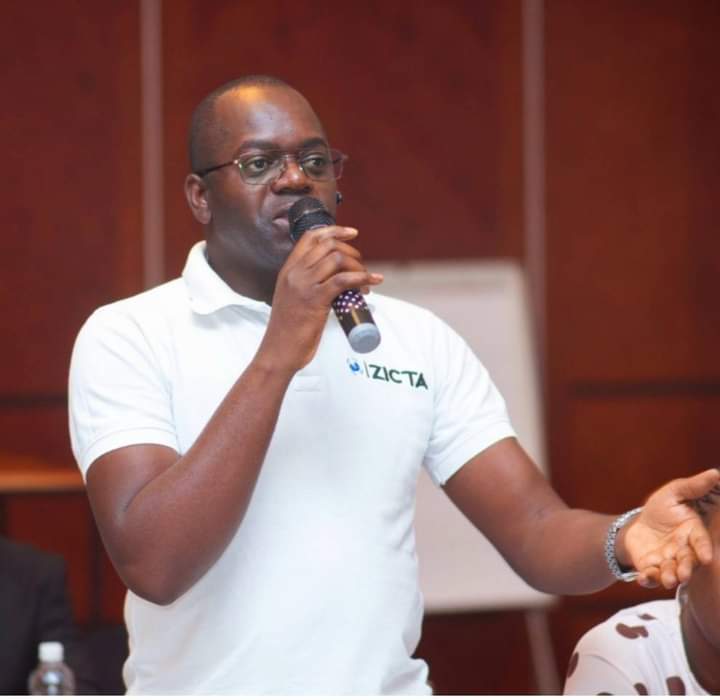
ZAMBIA Information and Communications Technology Authority (ZICTA) Manager Corporate Communications Hanford Chaaba
By Derrick Sinjela, Henry Chunza, Simon Banda and Muleya Idaho Chongo
ZAMBIA Information and Communications Technology Authority (ZICTA) Manager Corporate Communications Hanford Chaaba anticipates improvements in uptake and usage of ICT services on the backdrop of increased investments by operators in the capacity and coverage of their networks, competitive pricing outcomes on the market as well as general improvement in demand for ICT services.
Mr. Chaaba’s optimism arises from the 2022 Annual Market Performance Report for the Information and Communication Technologies (ICT) Sector, which shows increased utilisation of ICT services in the Zambia over the period January to December of 2022.
On Local Developments in the ICT Sector, Chaaba reports that by the end of December 2022, there were a total of eighty-four (84) valid licenses in the ICT sector compared to seventy-three (73) valid licenses that had been issued by the ZICTA at the end of December 2021.
In the postal sector, Chaaba says a total of seventy one (71) valid licenses at the end of December, 2022 compared to forty nine (49) valid licenses that had been issued at the end of December, 2021 reflecting a growth rate of forty-five percent (45%).
Chaaba explained that a total number of active mobile money subscriptions in the Zambia increased from 9.8 million in 2021 to 11.2 million subscribers in 2022 representing a growth rate of 13.98 percent.
Further, Chaaba pegged the value of mobile money transactions as having increased significantly from ZMW 169.4 billion recorded at the end of 2021 to ZMW 295.8 billion at the end of 2022, reflecting an increase of 74.63 percent.
Similarly, Chaaba reports that the volume of mobile money transactions increased from 834 million transactions at the end of 2021 to 1,581 million transactions at the end of 2022 reflecting an improvement of 89.60 percent.
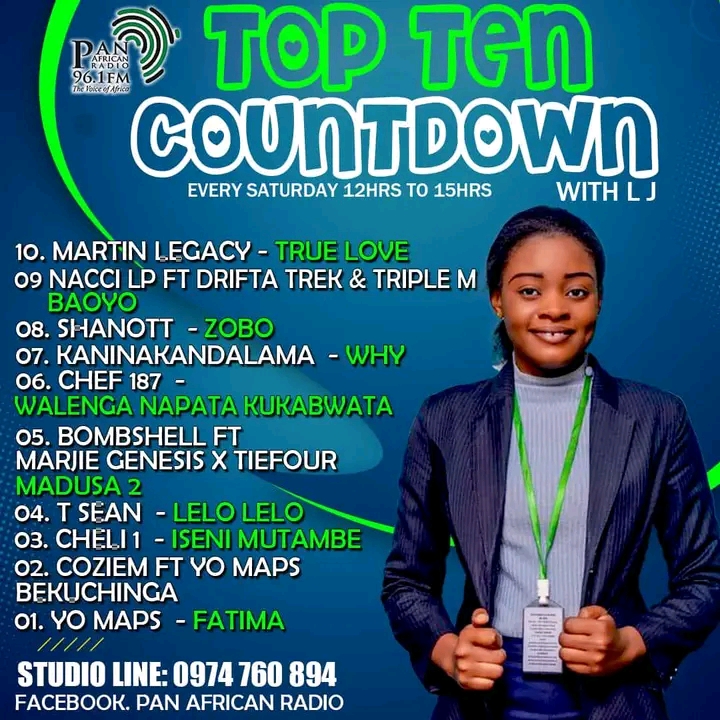
Pan African Radio 96.1FM Journalist Lwendo J. Kunda
Chaaba attributed this performance as representing extensive adoption of digital financial services and presents important opportunities for increased financial inclusion in Zambia.
In order to curb the increase in digital financial crimes in the country, Chaaba reported that ZICTA in collaboration with the Mobile Network Operators (MNO’s) introduced the *707# short code for reporting, with a view of deactivating, SIM cards used in perpetuating digital frauds and scams.
In addition, ZICTA in collaboration with GSMA Zambia successfully expanded its initiatives related to Green ICTs through the launch of an initiative for the Phasing out of airtime scratch cards.
Making reference to the 2023 National Budget statement issued by the Minister of Finance and National Planning, Dr. Situmbeko Musokotwane, Chaaba reported that the postal and courier license fees charged by the Authority were reduced from ZMW 15,000 to ZMW 10,000 for Domestic License whereas the fees for the local license were reduced from ZMW 10,000 to ZMW 5,000.
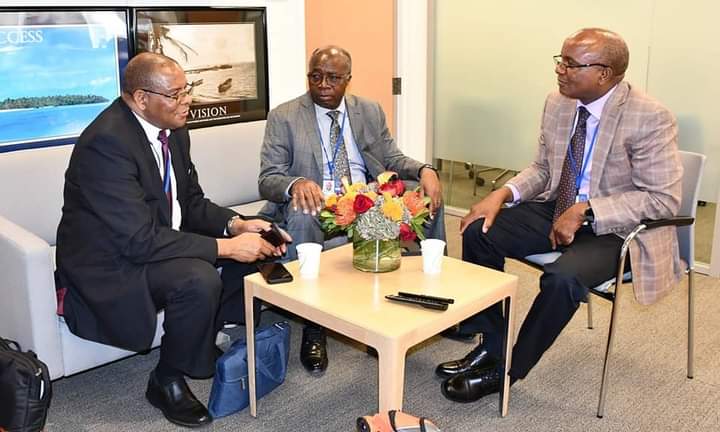
Bank of Zambia (BoZ) Governor Dr Denny Hamachila Kalyalya, Finance and National Planning Minister Dr Situmbeko Musokotwane and Secretary to the Treasury Felix Nkulukusa in Washington October 2022 plotting Zambia’s recovery to ameliorate high poverty, high income inequality and high unemployment
Chaaba says ZICTA equally introduced a number of tax reforms related to Value Added Tax (VAT), Corporate Income Tax (CIT) and Customs Duty (CD) in the ICT sector.
On performance of the ICT Sector, Chaaba says the total number of active mobile cellular subscriptions reduced from 20.2 million subscriptions reported at the end of 2021 to 19.8 million subscriptions at the end of 2022 representing an annual decline of two percent (2%).
Correspondingly, Chaaba says the mobile cellular penetration rate, defined as the ratio of the total number of active mobile cellular subscribers to the total population, in Zambia declined from 110 percent reported at the end of 2021 to 101.2 percent at the end of 2022.
“The overall decline in the number of mobile cellular subscriptions as well as mobile cellular penetration rate was mainly attributed to the significant number of sim cards that were deactivated relative to the new activations during the review period in a bid to increase compliance to the sim registration guidelines issued by the Authority as well as efforts to curb the surge in fraudulent activities carried out on mobile cellular platforms,” explained Chaaba.
However, Chaaba reports that the volume of domestic outgoing traffic increased from 24.4 billion minutes in 2021 to 28.5 billion minutes in 2022 reflecting a growth rate of 17 percent.
“The increase in domestic outgoing traffic is mainly attributed to the continued favourable pricing arising from discounted minutes offered through bundled packages by operators who continued to increase the number of minutes in bundled packages as a strategy for customer acquisition and gaining a competitive edge on the market. The volume of both the outgoing and incoming international traffic continued on a downward trajectory in 2022. Notably, the volume of international outgoing traffic reduced from 17.4 million minutes recorded in 2021 to 14.9 million minutes in 2022 reflecting a reduction of 15 percent,” noted Chaaba.
Chaaba attributed this continued decline in international outgoing traffic to the increasing use of close substitutes to traditional calling platforms which included Voice over Internet Protocol (VOIP) enabled applications like WhatsApp to name but one.
Chaaba says total number of active internet subscriptions in Zambia increased from 10.4 million subscriptions reported at the end of 2021 to 11.1 million recorded at the end of 2022 representing a growth of 6.73 percent.
“Consequently, the increase in the total number of active internet subscriptions reflected a marginal increase in the internet penetration rate from 56.7 per 100 inhabitants reported in 2021 to 56.8 per 100 inhabitants attained in 2022. This increase was partly attributed to the increased investment in 3G/4G networks as well as other emerging technologies. The Lit/equipped capacity among the mobile network operators reduced from to 181,740 Megabits per second (Mbps) reported in 2021 to 155487 Mbps in 2022 representing a decline of 14.4 percent,” said Chaaba.
However, Chaaba reports that the capacity usage increased from 89,280 Mbps in 2021 to 126,199.82 Mbps in 2022 reflecting a growth rate of 41.4 percent reflecting increased utilisation of data services among users.
Chaaba is delighted that the total number of telecommunication sites that were operational in Zambia increased from 11,478 sites at the end of 2021 to 11,987 sites at the end of 2022 representing a growth rate of 4 percent or 509 more sites.
Chaaba says the total number of telecommunication towers in Zambia increased from 3,417 reported at the end of the 2021 to 3,506 at the end of the 2022, representing an overall increase of 2.6 percent or 89 more towers.
“These improvements had a positive impact on both quality of service and coverage in Zambia,” said Chaaba.
Equally pleasing, Chaaba says the mobile telephone subsector reported an 18 percent increase in revenue performance at the end of December 2022 compared to the same period in 2021.
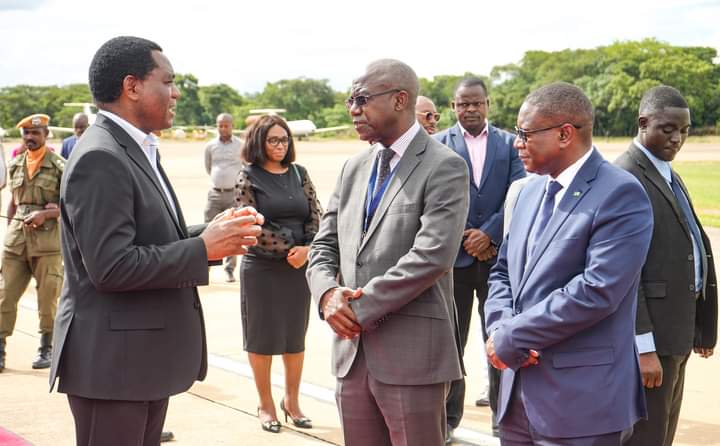
President Hakainde Sammy Hichilema HSH7 met by Secretary to the Cabinet Mr. Patrick Kangwa
Specifically, Chaaba says revenues in the subsector grew to ZMW 7.8 billion at the end of 2022 from ZMW 6.6 billion at the end of 2021.
Chaaba reports that Airtime remained the largest contributor to Mobile Network Operator (MNO) revenues accounting for 45.2 percent of the total revenues in the subsector.
The contribution of data services to total revenues increased from 30.5 percent at the end of 2021 to 36.9 percent at the end of 2022 making it the fastest growing revenue source.
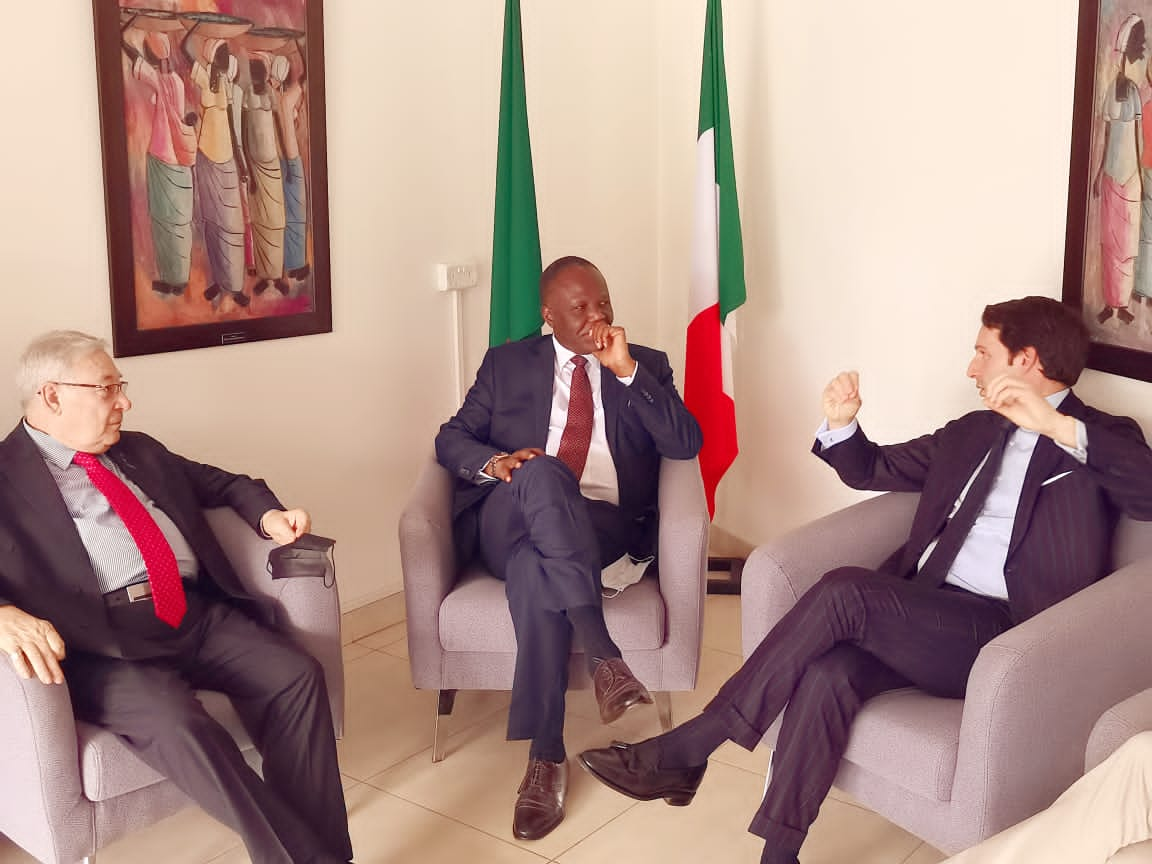
Zambia’s Technology and Science Minister Felix Chipota Mutati with Italian Ambassador to Zambia Mr. Antonino Maggiore and Ndeke Hotel proprietor, Gaudêncio Rossi -picture MDC Media Team/Edmond Miti
On the outlook for the ICT Sector in 2023, Chaaba explained that
ZICTA forecasts a positive picture in the general uptake and use of ICT services in the subsequent review period as the number of active mobile network subscriptions is expected to increase from 19.8 million reported at the end of 2022 to 20.4 million subscriptions at the end of 2023 and subsequently 21.3 million in 2024.
In addition, Chaaba says the volume of domestic outgoing mobile voice call minutes is forecasted to increase from 28.5 billion minutes estimated at the end of 2022 to 32.1 billion projected for the year 2023 and could reach 34.5 billion minutes in 2024.

ZICTA Director General Andrew Nalubamba
Note:The detailed Annual Market Report is available at https://www.zicta.zm/publications Issued By: ZICTA




